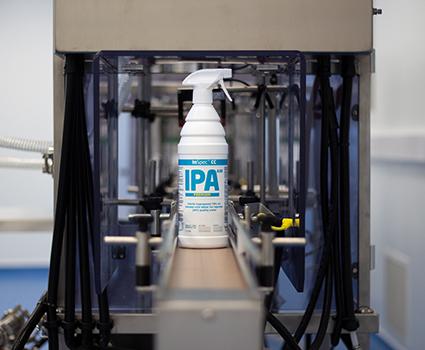
What’s new for cleaning and disinfection? By James Tucker
After the last revision of Annex 1 draft, which was issued for consultation in December 2017, there have been many changes to the world in which we live. The EMA left its London premises on the first of March 2018, relocating to Amsterdam in response to the UK decision to leave the EU (Brexit). Now, across the globe we are influenced in our daily lives from the impact of the global Covid-19 pandemic: from lockdowns to supply chain or occupational issues, and even on a more personal level.
The UK decision to leave the EU drove the French Competent Authority to take up the mantel of updating Annex 1 and the significant work that had been undertaken to bring the guideline up to date. However, even this work is not immune to the effects of Covid-19, with the consultation open period being extended to June 2020. So for those expecting this to be implemented some time ago, there is still a way to go – but, perhaps this allows us time to consider the intent and prepare for the expectation of inspectors.
Annex 1 amendments
There are some significant changes in this latest incarnation of the Annex, not least in the opening scope, where QRM (Quality Risk Management) and its implementation throughout is called out, even when not specifically referenced. The scope also covers the decision of the manufacturer to elect the application of the guidance for products not intended to be sterile, but which benefit from the control/reduction of microbial, particulate and pyrogen contamination.
The CCS (contamination control strategy) has gained additional strength and continues in this update, including the requirement for cleaning and disinfection as part of the collective contamination control measures, with continuous improvement.
Prominent features of Annex 1
Transfer disinfection continues to make a prominent feature as part of cleaning and disinfection, reiterating the need for an approved list of items for transfer into Grade A or B zones, as well as the need to protect items through the transit of Grade B. Any items not approved should be transferred through on pre-approved exceptions, and risk mitigation measures for this should form part of the CCS. It continues to re-iterate the need for transfer from lower grade (previously not mentioned) or unclassified areas to higher grade cleanrooms and this should be subject to cleaning and disinfection commensurate with risk – it would therefore suggest that as bioburden is higher in low-grade areas, the use of a sporicidal agent would be prudent. This would have to be measured against the risk of re-introduction at a later stage of the material transfer process as well as residues from the disinfectant, when using non/weak sporicidal products with no/minimal residue at later stages.
Continued focus on residue management
Under the specific section on disinfection the Annex still includes a focus on the requirement for residue management and this is now no longer in brackets, which may indicate an increased authority for this element. However, the sentence on residue removal no longer includes the word “first”, which would indicate that, in line with the increased emphasis on QRM, the prior cleaning could be managed. It is also important in this section to note that more than one agent should be used with different modes of action to control bacterial and fungal contamination – this would indicate that the expectation is that broad spectrum disinfectants are expected to provide the users with regular fungicidal control – which not all broad spectrum products do today. Sporicidal products are separated as a periodic control measure. The section also now includes the requirement of monitoring for resistant organisms, which could be especially problematic when products do not provide fungicidal efficacy as mentioned previously.
It emphasises the need for end users to validate the disinfectant in the way they are actually used and for the period of use (e.g. contact time). Where products are made up in house there is an increased burden on proof of monitoring and in-use shelf life, whereas products supplied “ready-made” are subject to the control measures in place for the vendor.
No doubt this will continue to be debated (perhaps more via Zoom and other platforms than in the usual forums). However, it’s clear that we will continue the general intention of this and the previous draft to Annex 1, and the industry eagerly waits the final incarnation of the Annex after the long anticipation.
James Tucker is with Redditch Medical/Entaco






